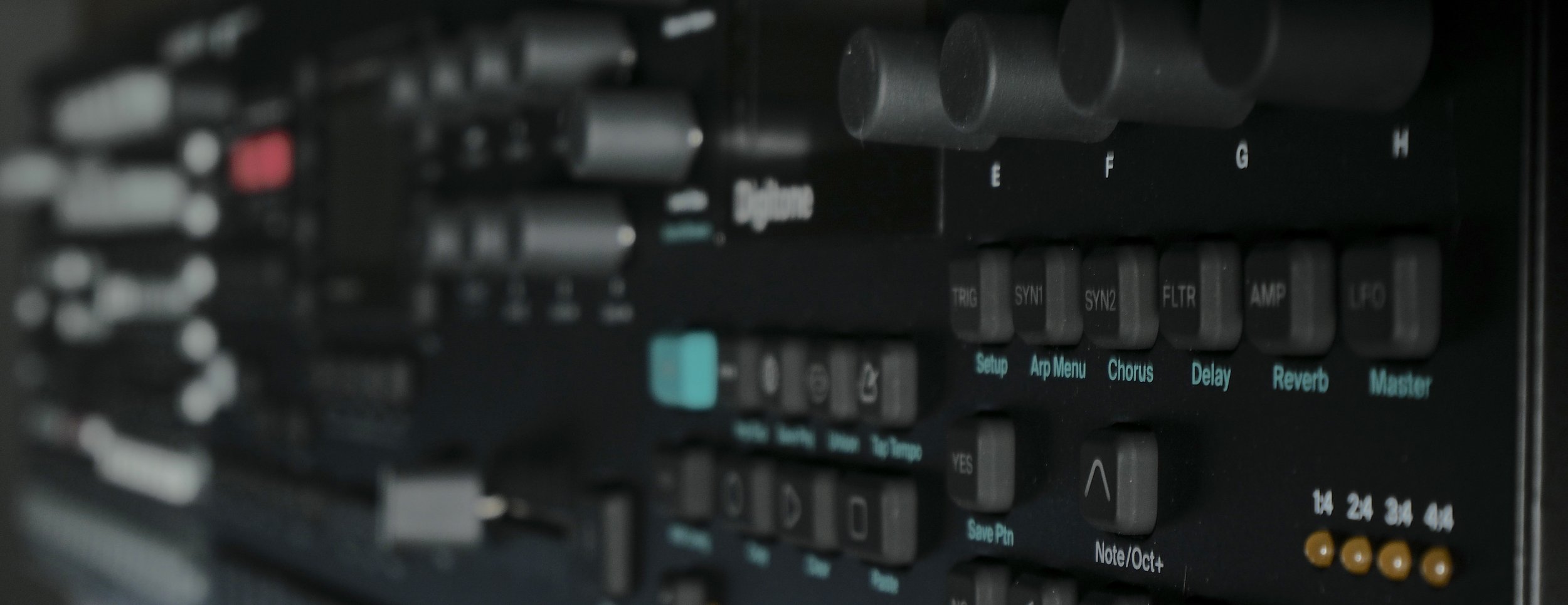Elektron Review
Elektron products have been some of my favorites ever since I started making elektronic music. They just fit my grid style workflow to a T and really embrace everything I’ve wanted in a synthesizer since the beginning.
I’ve used many Elektron synths and plan on reviewing almost all of them (if I can get my hands on the older ones again) so I figured I should write a separate article covering many of the features and topics that will be redundant across their ecosystem.
I started out using Korg Electribes, having owned several EMX, an ESX, and even an ES mkii all prior to owning my first Elektron unit. I would spend so much time manually going through each step and parameter adjusting
values via a dense menu just to achieve what an Elektron sequencer can do with a simple P-lock. Each unit has minor little quirks and unique aspects, so I’ll try to keep those to their respective articles
Build: Elektron builds are solid, simple, and maybe a little bit fragile. Given their price you’d want to be delicate with them anyways, but the encoder system can feel a bit more “clinical” than most potentiometer based synths. Disregarding the analog mkii units and the model units, Elektron has kept consistent dimensions per unit, and I particularly enjoy this form factor, including the 1/2 sized “digi” units.
Most boxes support a plethora of I/O with inputs for effects, and usually outputs for multiple parts. The buttons always have a nice light/quiet feel to them
UI: Encoders to the right of the display take care of their respective on screen parameters, and the page buttons swap between various pages for each engine. Where most synths would have a basic data entry encoder and force you to navigate page items via up and down arrows, Electron makes use of all encoders on each page, meaning any given parameter is only 1-2 page clicks away.
Each page has its own button, with a second click taking you to its next page, and shift click often taking you to another menu location. this allows you to reach well over 100 controls with only a few buttons and knobs
The settings and program menus are generally straight to the point with a fair amount of advanced controls you can adjust to get each unit working exactly how you’d like in your system. Some units even allow you to save different settings as presets or projects if you need to swap between different functions regularly
A big aspect of the “Elektron workflow” is the sequencing feature named “P-Locks” or parameter lock. Parameter locks allow you to hold down any number of steps, and adjust any controls for just those steps, it is a simple and intuitive operation that is unrivaled in the world of software. This workflow is absolutely perfect for creating rhythmic synthesis where different parameters shift and jump around. Where many synths strength is in creating individual powerful tones, with maybe some simple motion, Elektrons excel at complex motion and wild tonal shifts.
Newer models have a few extras that the original pair weren’t designed with, so keep in mind these settings are not available in the Monomachine or Machinedrum (I can’t speak on the model units yet)
In the vein of parameter locking, we’ll look at “sound locks” and “trig conditions first.
Sound Locks allow you to load an entire preset from the sound pool per step. The sound pool is a little mini preset bank of 128 sounds per project, it’s a great way to load and sequence various percussive tones and drums without having to lock each and every parameter per step
Trig Conditions are an additional setting per step, allowing you to set the probability a step activates, or if it triggers via several other conditional requirements (such as a playing only after a certain number of cycles, or given the condition of the previous step)
One other feature introduced in the newer models is the ability to detach the sequencer length and beat division per part, allowing all sorts of polymetric evolving patterns
General System: The synthesis engines are usually fairly simple and follow some connective flows. The Osc pages take care of the basic sound generation, followed by a filter page, then modulation
usually there will either be a couple lfos, or maybe assignable envelopes, generally allowing one or two destinations each, but allow you to modulate nearly everything. Remember you can always parameter lock settings if necessary, in my mind this should count as a form of modulation. But if you’re only looking at modulation included in the synthesis engine, it is usually fairly shallow in terms of parallel connections, but deep in terms of what those connections can do
One other aspect, introduced after the Octatrack, is Overbridge,
Overbridge is a system that allows you to connect your Elektron unit via USB to your computer and use it sorta like an audio interface/plugin
There’s options to run multiple tracks as independent channels or run the whole device as a single unit. The included plugin works as an editor UI, but also saves parameters to your Daw’s project for recall later.
I don’t have much experience with Overbridge as of yet, but it can be a nice way to free up channels on your audio interface, or apply post processing to individual tracks without breaking out a whole mixer


